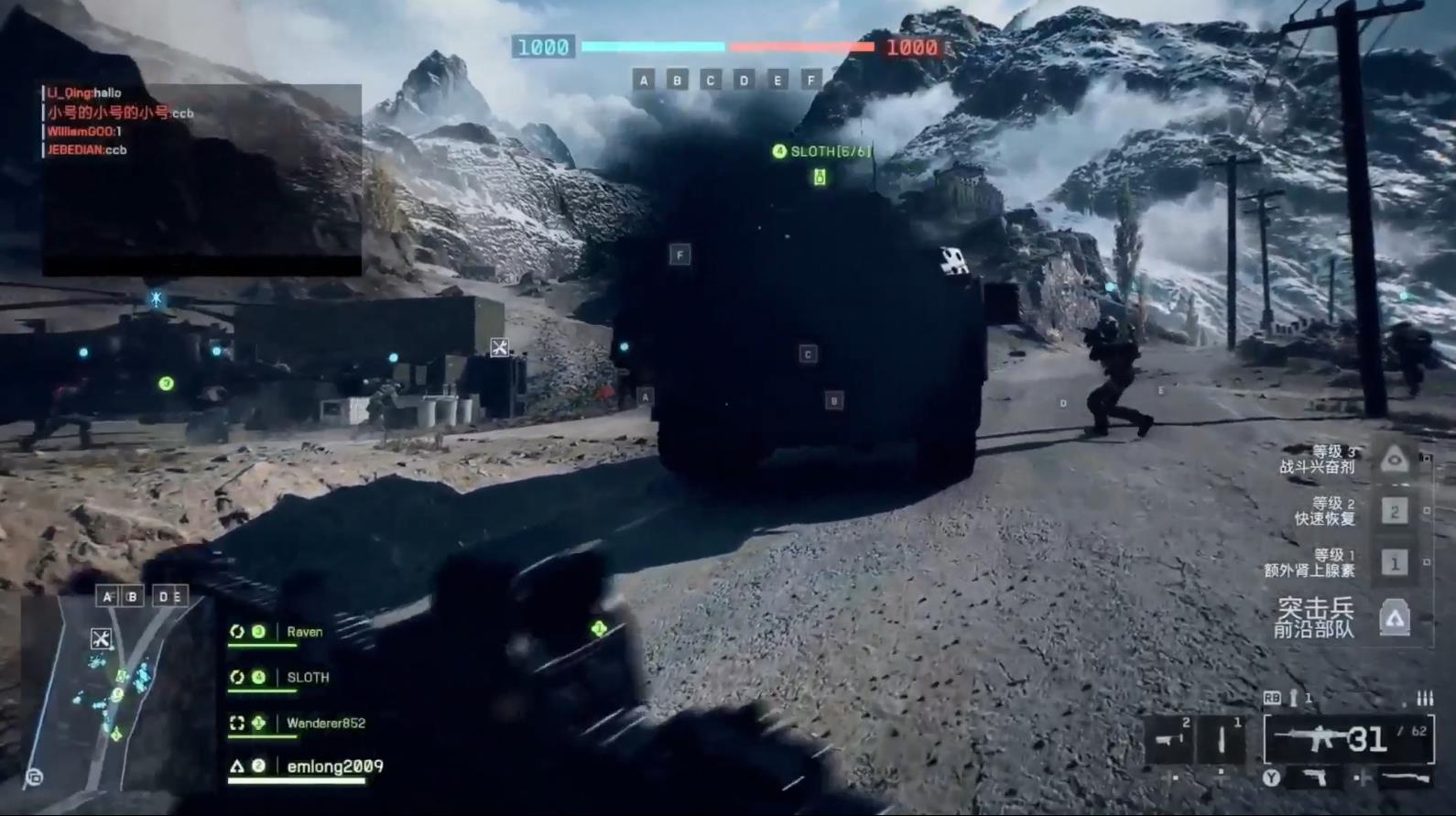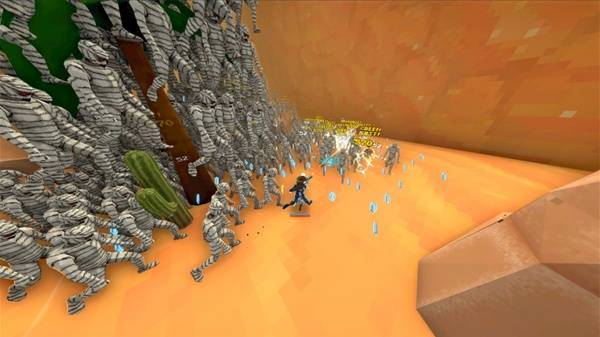
In the “Island Landing Test” launched on September 26, Out of Control Evolution made its first appearance to players in the form of large-scale cross-platform interoperability between mobile and PC.
As a product authorized to use the official gameplay of Rust, it has attracted extremely high attention since its debut. Before this round of testing, its pre-registration volume had exceeded 10 million, making it a focal point in the Survival Online Combat (SOC) game track. Compared with the previous small-scale closed beta tests, the “Island Landing Test” not only allowed more players to experience the game directly but also gave the outside world an opportunity to observe its system framework and product direction more comprehensively.

If Rust represents the origin of the hardcore SOC category, then the challenge facing Out of Control Evolution is: while retaining the original game’s freedom and intense, no-holds-barred experience, how to adapt this gameplay to mobile devices and cater to a broader user base today.
From the content of this round of testing, it is evident that the development team is taking a relatively cautious approach—on one hand, they are unwilling to completely weaken the inherent sense of survival tension of the category; on the other hand, they are continuously lowering the threshold through gameplay 分层 (mode stratification), goal-oriented design, and operational convenience. Whether this balanced approach will succeed remains to be seen, but at the very least, it is clear that Out of Control Evolution is exploring a path that Rust has not yet ventured into.
1. Breaking Down Barriers with Stratified Modes and Guided Systems
A notable issue with SOC games is their high threshold: long-term time investment, severe death penalties, and endless player vs. player (PvP) combat often deter many potential players.
In this test, Out of Control Evolution directly adopted a mode stratification strategy—ranging from the tutorial-focused “Prologue,” to the “Softcore” mode with reduced penalties, then to the “Standard” mode for regular players, and finally the “Challenge” mode reserved for hardcore enthusiasts.
The game’s Prologue is more than just assigning guidance tasks to players; it is designed to provide a coherent learning experience through gameplay: from basic resource gathering, crafting, and survival essentials to initial construction and defense, players gradually understand the core loop of SOC through hands-on practice.

Official Beginner Tutorial of the Game
The Softcore mode targets players who want to experience the game’s ecosystem and construction more casually without the fear of “base raiding.” It weakens the direct impact of death penalties and resource looting. The Standard and Challenge modes, however, retain the intensity of combat and risk, leaving room for players who prefer high-stakes competitive tension to showcase their skills.
This design achieves two obvious effects: first, it provides new players with a smooth, gradual entry path; second, it allows players with different preferences to coexist within the same product, reducing the risk of player attrition caused by a one-size-fits-all approach.
Building on this foundation, the game also guides players’ in-game interests through an Intelligence System and a Faction System.
Freedom is the core appeal of SOC, but excessive freedom often leads to a lack of clear goals. Out of Control Evolution introduces an Intelligence System, which breaks down long gameplay sessions into several phased objectives: exploring ruins, collecting specific intelligence, and faction combat events. These tasks do not restrict players’ choices but provide clear direction at key stages.

This is particularly useful for mobile players with fragmented time: when unsure of what to do next, intelligence tasks offer clear options, thereby reducing confusion and the risk of early attrition.
In contrast, the Faction System serves a long-term function. By completing faction tasks, players can unlock long-term rewards or new features, while gaining a deeper understanding of the game’s worldview—making progress beyond individual matches more tangible. In the short term, the Intelligence System acts as an “in-match guide”; in the long term, the Faction System connects players’ long-term actions, providing continuous positive feedback for their growth. Rather than being forced to learn the game, players are motivated to grow through phased objectives, gradually experiencing the game’s unique charm from shallow to deep.

Going a step further, one of the biggest technical and experiential highlights of this test is cross-platform interoperability. Players can enjoy higher graphics quality and an immersive experience on PC, while seamlessly continuing their progress on mobile devices using the same account.
For SOC players, this is a highly practical innovation: the traditional conflict between “staying up late to guard the base” and “base being raided while offline” is partially alleviated by the ability to log in at any time to monitor progress or check in during fragmented time slots.

In terms of actual implementation, the development team has imposed restrictions on matching rules: by default, mobile players are matched in mobile servers to ensure fair experience, while a mixed-server option is also provided to balance the issues brought by cross-platform matching.
Overall, previous similar products often lacked 新手 – friendly (newbie-friendly) mechanisms, resulting in a naturally filtered player base. Out of Control Evolution has made structural adjustments to cater to more players, aiming to cover a broader audience: for veteran players, they can still choose to challenge their limits in a high-difficulty, immersive experience; for new players, there is at least a relatively gentle entry path.
2. Adapting Endgame Experience to Mobile: Balancing Core Gameplay and Convenience
As is well-known, adapting endgame experiences to mobile devices requires special attention to three key aspects: retaining core gameplay, simplifying operations, and accelerating pacing. From this test, Out of Control Evolution has delivered a solid performance in these areas.
First, changes to the map. For SOC games, the map is not just a background but a container for gameplay. In this test, the map area has been expanded and its content made more dense. New strongholds such as train stations and bandit camps are not just decorations—they have become natural hubs for resource competition and player conflicts.

The addition of neutral strongholds (such as locations where players can purchase supplies or call for support) supplements the original ecosystem, making in-map activities no longer limited to wilderness resource gathering or simple combat. It also introduces more interactive possibilities, such as trading, raiding, and temporary cooperation.
The larger map area and more dense event points make exploration and conflicts more frequent. Especially when strongholds form natural connections, players’ movement paths gradually stabilize, creating an organic local ecosystem. Such changes are not just quantitative increases but substantially impact the player’s gaming experience.

More importantly, the development team has not abandoned weapon diversity; instead, through balance adjustments and mechanism optimizations, they ensure each weapon has its tactical purpose. New equipment such as chain-fed machine guns and homing missiles appeared in this test, further expanding players’ tactical options.

At the same time, on mobile devices, the game has tried to convert complex button logic into more intuitive touch controls. This strategy not only lowers the entry threshold but also retains a certain degree of operational depth for experienced players to explore.
The critical construction system remains at the core of SOC, but its operational experience has also been optimized for convenience:
Features such as one-click upgrades, quick blueprint construction, and batch maintenance significantly reduce tedious operations. These changes are not intended to weaken the strategic value of construction but to allow more players to participate in the construction loop, rather than making it an exclusive skill for a small minority.
The base raiding/attack-defense mechanism still exists and is the key to victory in certain modes. This means that despite simplified operations, the strategic value of construction, layout design, and defense planning remain important. The difference is that players can achieve the same goals with less repetitive work, allowing them to focus more on cooperation and combat.

In addition, to adapt to fragmented mobile gaming, the product has added short-duration tasks and dedicated fast-paced combat modes (such as short-round territory offense and defense). These designs allow players to gain a clear sense of accomplishment even within limited time, while providing optional pacing for different players: those who want in-depth gameplay can join long matches, while those seeking fragmented satisfaction can play short rounds.
During gameplay, players can easily feel the “flexibility” of Out of Control Evolution.
3. Uncompromising Principles: Fairness and Core Hardcore Charm
Yet Out of Control Evolution has also held firm on several key principles.
For example, in this round of testing, commercialized content was mainly limited to cosmetics and skins. The development team once again publicly emphasized that they will not sell stat-boosting items or provide direct combat power enhancements.

This restraint is particularly important for PvP-focused SOC games—once pay-to-win (P2W) stat items are introduced, the original fair combat will be undermined. At least from the current test, this bottom line has been upheld.
SOC products typically have long lifecycles, and market pressure may bring constant challenges. However, in the early stages, this positioning at least sends a clear signal: the product aims to take fairness as its core competitive advantage—a stance that has largely set the tone for the game’s long-term operation direction.
From a category perspective, Out of Control Evolution plays a role of “inheritance + expansion”: it carries forward the core hardcore survival combat experience of Rust while attempting to bring this experience to a broader player base.
Cross-platform interoperability, mode stratification, and operational simplification are all structural efforts made for expansion. If these designs are validated, it may become a reference model for the SOC category’s expansion to mainstream players.
From a competitive standpoint, the SOC track is not yet crowded, but it is not lacking in high-quality competitors. To stand out, the product must not only maintain the long-term loyalty of hardcore players but also establish a sustainable growth path in terms of new player experience and community systems.
In this test, Out of Control Evolution has presented a clear directional attempt: retaining the tension of hardcore gameplay while lowering the entry threshold through tool and gameplay design. Whether this balance can be converted into market advantages remains to be tested by long-term data in the future.
The “Island Landing Test” has allowed the outside world to see the complete picture of Out of Control Evolution for the first time. It is neither a fully lightweight SOC nor a carbon copy port of Rust. Rather, it is a reimagined version under the original game’s spirit: retaining the core of free development and fair combat while introducing distinct cross-platform features.
From an industry perspective, Out of Control Evolution provides a noteworthy case. At a time when the SOC category is generally stuck with an audience ceiling, it demonstrates a possible path: instead of sacrificing hardcore elements to achieve expansion, it gradually lowers the threshold of hardcore gameplay through stratification and adaptation. Whether it will succeed still has many variables, but at the very least, it has put the question “Can hardcore SOC enter the mass market?” back on the industry’s agenda.















暂无评论内容